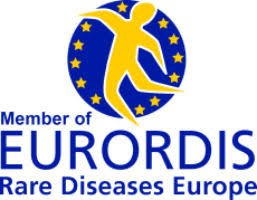Types of seizure(s) seen in r(20) syndrome
A seizure is a sudden, uncontrolled electrical disturbance in the brain. It can cause changes in your behaviour, movements or feelings and in levels of consciousness. Several different seizure types may be seen in a person with r(20) syndrome.
A feature characteristic of the predominant focal seizures in r(20) syndrome is frightening hallucinations. Examples include seeing sharks swimming above them, fire, spiders or large black holes. These may be mistaken for non-epileptic events.
Here are descriptions of seizure types commonly reported in r(20) syndrome:
For accepted definitions of seizure types see www.epilepsydiagnosis.org
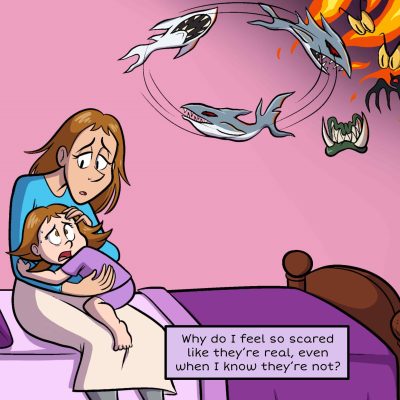
Focal seizures with impaired awareness
An atypical absence seizure or focal seizure with impaired awareness seizure may appear as if the person with r(20) syndrome is looking blank or not paying attention – as if they are daydreaming. However tis is not the case and the person’s brain is misfiring electrical signals such that they are unable to process information properly at this time.
At onset these are often from sleep. The person may rouse suddenly, sit up and have brief abnormal movements (stiffening or abnormal postures) of their arms and legs and may shout out before settling to sleep. These may occur several times a night and can be mistaken for night terrors. Events in the daytime where the individual appears frightened, confused and does not respond normally. Sometimes people may have clusters of seizures with brief periods of apparently normal awareness between several events.
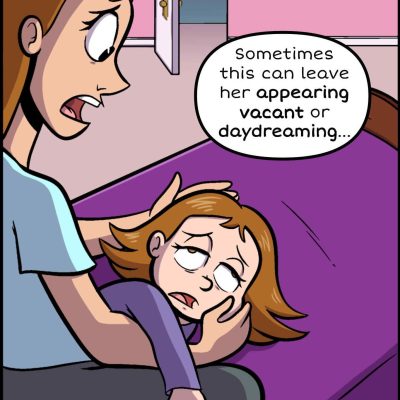

Non-Convulsive Status Epilepticus (NCSE)
A state of ongoing seizure or intermittent seizure activity with minimal or no motor movements and alteration of consciousness, often more simply described as ‘prolonged periods of confusion’.
These are prolonged focal seizures with impairment of awareness which may last many minutes to hours (rarely days). They often occur in the late afternoon and early evening.
Tonic-clonic seizures
This type of seizure most people recognise (previously called ‘grand mal’ seizures), where the person loses consciousness, their limbs become stiff, followed by jerks or shakes. Medical help must be sought for Tonic-clonic seizures lasting more than 5 minutes.
Tonic-clonic seizures can occur in isolation or evolve from focal seizures.
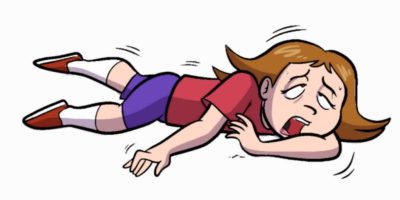
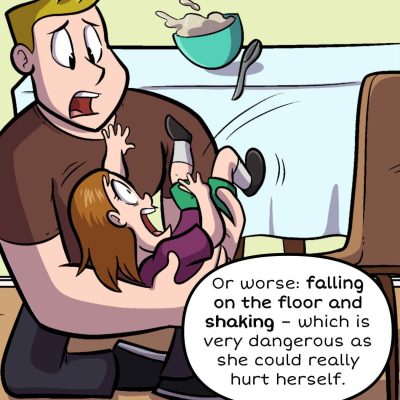
Myoclonic/Atonic seizures
Other seizure types include:
- myoclonic seizures (rapid jerks of muscles) or
- atonic seizures (loss of muscle tone)
both seizure types may result in sudden drops or falls.
SUDEP
Sudden, unexpected death of someone with epilepsy (SUDEP) is when someone is believed to have died during or after a seizure where no other cause of death can be found. In young adults, who experience uncontrolled tonic-clonic seizures at night their risk of SUDEP is increased and therefore it is recommended tat appropriate precautions are taken to minimise this risk e.g. continuing to take medications regularly and on time and having a seizure monitoring device or alarm to alert someone if you have a seizure so they can time your seizure and call for additional help/ambulance if necessary.
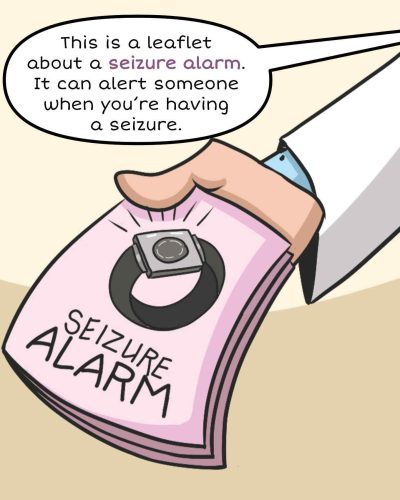
What other problems apart from epilepsy, affect people with r(20) syndrome?
Until the onset of seizures childhood development appears to be normal, however there often follows a rapid decline in intellectual function. Skills previously attained may be lost. This decline in ability varies from losing some skills but remaining in the normal range for intellectual function, to a significant loss in skills including difficulties with mobility and loss of speech and language functions. When this decline is associated with epilepsy it is called an epileptic encephalopathy. When very severe, r(20) syndrome may manifest in some people as a form of childhood dementia.
Support is likely to be required at school/college or even in the workplace.
Behavioural issues such as bouts of aggression before and/or after a seizure are commonly reported. Individuals may also receive a diagnosis of autism. Predicting how severe these learning and behaviour problems will be in the future is not possible at the onset of the epilepsy.
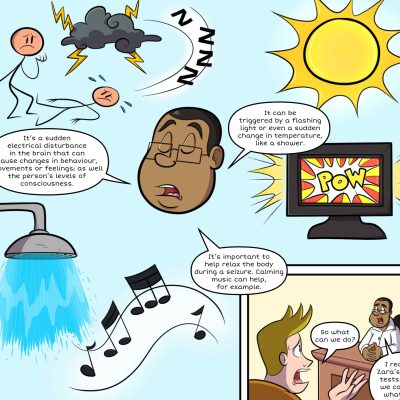
How frequent are seizures typically in r(20) syndrome?
Seizures may become very frequent with multiple events per day.
“Seizure frequency varies from person to person, from having episodes daily to only a few occurring yearly. However, dissimilar to other epilepsy syndromes, individuals do not experience a reduction in events with age. Nevertheless, research suggests seizures became more frequent during puberty; according to parents, however, not enough research has been done to support this. In those with mosaic r(20), there does not appear to be any link between the percentage of ring 20 cells and seizure frequency. Generally, seizures become more severe with time. However, seeking advice from doctors and developing coping mechanisms can reduce the number of events an individual has.”
Seizure triggers in r(20) syndrome
Little is known about the triggers of Ring 20, and more research is needed; however, families have identified several types of triggers for seizures, including:
– Physical exercise
– Showering or bathing
– Sudden changes in temperature
– Tiredness
– Stress
– Eating
When the electrical brain wave patterns have been studied on an electroencephalogram (EEG), an individual with ring 20 syndrome is shown to have various patterns. Bifrontal slow waves can be distinguished from the EEG and, when identified by a professional, can be the first clue to examine for ring 20. However, when professionals using magnetic resonance imaging (MRI) on the brain, it most typically looks normal
How may seizures change over time?
Nocturnal focal seizures are often the first seizure type. People with r(20) syndrome can go through periods where they have multiple very difficult to control seizures on a daily basis and this may be associated with significant intellectual and behavioural decline. These periods tend to be more of a problem in the first few years after presentation. Later in the course of epilepsy, the seizures may become less frequent and may change over time with a more predictable pattern specific for that individual. Complete seizure freedom for prolonged periods (years) appears to be exceptional with most people having seizures in adult life.
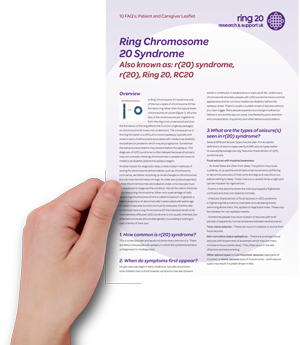
Looking for more information?
Download our pdf information sheet on Ring20 or click here for ways to contact us.


